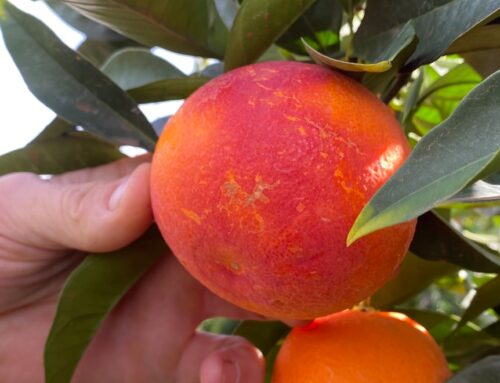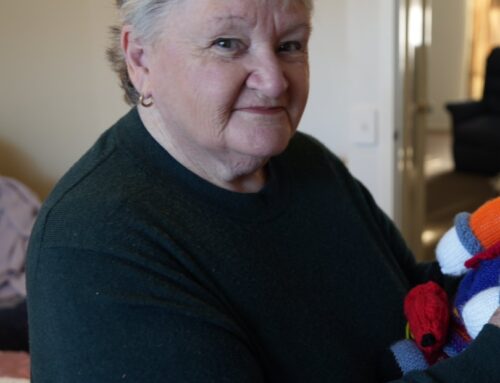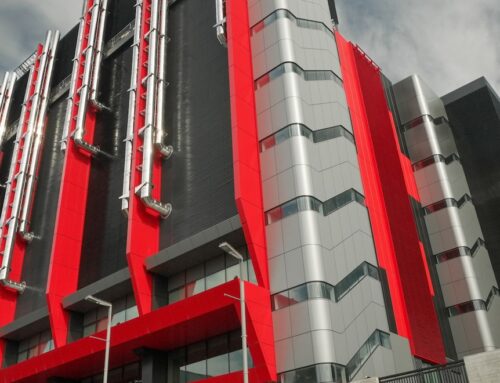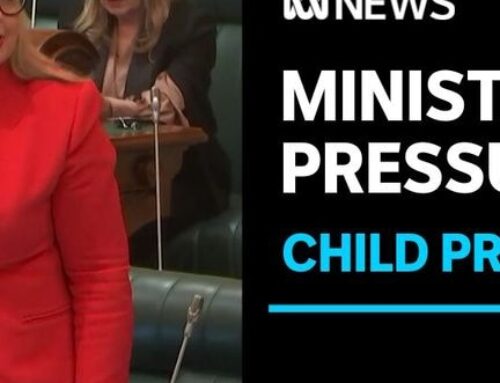After hours in labour, a new mother finally hears a high-pitched wail.
She’s overcome with joy, exhaustion and relief, as a midwife hands her a tiny newborn, healthy and crying.
But in a scene described by a South Australian government whistleblower, what happens next is anything but joyous.
As the new mum holds her seconds-old baby to her chest, police officers and security guards stand at the hospital’s delivery-room door.
Two child protection workers enter and hand her a piece of paper.
They tell her they are going to take her baby.
Jane* has first-hand knowledge of forced newborn removals and said the aforementioned scenario was all too common.
She has spoken to the ABC on the condition of anonymity.
To protect her identity, the ABC is not publishing Jane’s real name, her role, or the department for which she works.
She said she no longer wanted to stay silent about what she described as “inhumane” practices.
“We don’t treat them [the mothers] like human beings,” the public servant said.
“In some ways, they’re also deemed as not worthy.”
‘Horrendous stories’
Last financial year, SA’s Department for Child Protection removed 105 babies, aged under one month, from their mothers.
About one third of those were Aboriginal, and most were removed before they were one-week-old.
The removals often take place in public birthing hospitals after members of the public file so-called “unborn child concerns” – notifications to the department during a woman’s pregnancy.
Mothers whose babies are removed at birth can be accused of being unfit to parent, live in inappropriate housing, not show up to antenatal appointments, or misuse drugs and alcohol.
Jane said some mothers were still children under the guardianship of the Department for Child Protection.
She said others were experiencing domestic violence at home.
While the department is legislated to protect children from potential harm, Jane said she was concerned about how mothers were treated by authorities.
“You can hear some horrendous stories where women still haven’t actually completed the birthing process, as in they haven’t delivered the afterbirth,” she said.
“The department is already in there removing the baby, or [the mother is] needing to get sutured because they’ve had an episiotomy, yet the department’s sort of in there.
“There’s just no consideration for general human wellbeing.”
‘Legally shouldn’t happen’: Mothers separated from babies
Jane estimated up to 80 per cent of women arrived at hospital in labour unaware that the Department for Child Protection intended to remove their baby at birth.
She said the department would tell hospital workers whether it had given advance notice to a family about its intention to remove the baby, and if the family had not been told health staff were “told not to tell them”.
“You can imagine the excitement, the hormones – everything that’s going through your body after giving birth – and then to have it ripped away without any prior warning is extremely difficult,” she said.
Jane said the department was concerned about “flight risk”, believing some mothers would “take off and go somewhere else and have a baby” if they were told about the removal in advance.
She said police were present at most removals, and about half of removal notices were issued in hospital birthing suites.
“I think personally, it comes down to the actual social worker in the department not actually really wanting to have that open and honest conversation,” she said.
“It’s easier not to have it.”
SA Health policy states that “infants are not to be separated from their mother (other than for medical reasons) until section 41 [legislative powers authorising the removal of a child] has been invoked”.
But Jane said in some cases, the Department for Child Protection asked hospital staff to find a “pretext” to take a baby out of a ward, so the infant was already separated from the mother when a “section 41” removal notice was served.
“They might need some sort of care, some sort of fictitious sort of reasoning, so the baby is not in the room,” she said.
“Different hospitals do it differently, but that is not an uncommon occurrence.
“There’s a range of things that happen, which legally shouldn’t happen until the notice has been served.”
‘We need to be open and honest with families’
Jane said mothers were often so traumatised after their baby had been removed they left hospital earlier than medically advised, sometimes with concerning consequences.
She recalled one mother who left hospital early having to return to an emergency department after experiencing “significant bleeding”.
SA Health policy states when a baby is removed at birth, a “care plan” should be developed with “supportive counselling for the mother as well as detailed contraceptive advice”.
But Jane said mothers experiencing “significant grief and loss” rarely had follow-up physical or mental-health care.
She said more needed to be done to prevent removals happening in the first place.
“We need to be open and honest with families and be clear – if you don’t do this, this is what’s going to happen,” she said.
Department head and minister decline interviews
The ABC requested interviews with the Department for Child Protection’s chief Jackie Bray, SA’s Minister for Child Protection Katrine Hildyard and SA Health’s chief executive Dr Robyn Lawrence.
The department and minister’s offices declined, while SA Health said Dr Lawrence was unavailable.
In written statements to the ABC, the government did not deny the allegations.
Ms Bray said the safety and welfare of vulnerable infants was the department’s “highest priority” and a decision to place them into care was a “last resort”.
She said government guidelines had “an emphasis on early engagement and intervention to support families”.
“Depending on individual circumstances, there is a legislative requirement to keep parents informed about where the child or young person is placed and how they’re being cared for,” she said.
Ms Bray said the department responded to early reports made about unborn infants by holding family group conferences, “undertaking pre and post birth planning, having ongoing contact with the expectant mother and connecting the family with support services from other agencies”.
“We work alongside families and service providers to ensure we can achieve the best possible outcomes for infants identified as being at risk of harm,” she said.
Ms Hildyard said the government had provided $13.4 million for family group conferencing, which included convening meetings when there were “unborn child concerns”.
“It is my expectation that the department ensures the safety and welfare of vulnerable infants is always its highest priority when assessing risk and considering and undertaking removals,” she said.
“It is also my expectation that the department treats families with respect.”
Meanwhile, SA Health’s chief child protection officer Catherine Turnbull said a policy review was currently underway and would be complete by the end of the year.
“When an infant is considered at risk of abuse, harm or neglect, care needs to be focused on ensuring the safety of the child, while supporting the mother at the same time,” she said.
The Department for Child Protection’s deputy chief executive, Adam Reilly, has previously described claims of newborns being removed without their mothers’ prior knowledge as “alarming, but in some ways, not surprising”.
“All I can say is that I’ll always defend the work of our staff, but I’ll never defend the indefensible,” he told the public hearing in November.
“I can’t find a rational response to support that action.”
‘Genuine misinterpretation’
In February, the ABC asked the Department for Child Protection to provide data on how many babies had been removed at birth at public birthing hospitals over the past three years.
In response, the department said it did not keep data by hospital location, but said 24 babies, including six Aboriginal babies under one month of age were removed within the 2023 calendar year.
However, a department review conducted after the ABC’s report last month found incorrect information had been provided.
Updated data reissued to the ABC was that 105 newborns, including 34 First Nations babies who were one month or under, were removed from their parents in the last financial year.
A department spokesperson said it had been “a genuine misinterpretation of what some of the data represented”.
They said the department reissued updated data as soon as the information had been “carefully” reviewed.
Posted , updated




